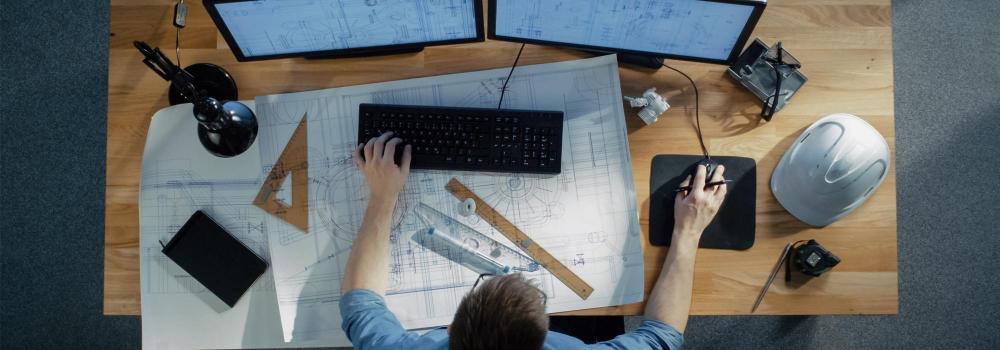Primex OneVue® solutions can improve any new building. From large-yet-segmented hospitals and schools to wide-open warehouses and transit centers, Primex technology can help strengthen timeliness, safety, and communication. But before these solutions can get to work, they often need to be included in new building plans that construction firms put together.
To make it easier for architects, engineers, and firms to include Primex OneVue in construction plans, complete specifications are available and ready to be copied and pasted into working documents. Within each spec, there are “Specifier Notes” that signify a section may need to be altered depending on the project. Below, find a brief overview of each spec that’s available for immediate use. Note that each of these specs can also be found in the MasterSpec database.
Synchronized Clocks
- OneVue Sync 72 MHz (Click to Download) — This spec provides information about the Primex OneVue Sync 72 MHz wireless synchronized clock solution. It includes a detailed System Description and Operation explanation that outlines how a 72 MHz frequency transmitter obtains master time from a supplied GPS receiver or an existing NTP server before transmitting that time signal to clocks throughout a singular building or multifacility campus. The longer wavelength and lower frequency help to ensure synchronized time throughout any size facility.
- OneVue Sync Bluetooth® Low Energy (Click to Download) — This spec contains information about the Primex OneVue Sync Bluetooth® Low Energy wireless synchronized clock solution. Included in the System Description is insight into how a Bridge device accesses an existing Wi-Fi network and creates a low-energy mesh network that sends time signal to all Bluetooth clocks throughout a facility. The option to utilize signal repeaters depends on the scale of the synchronized clock system. A benefit of a mesh network is its self-healing, self-forming, and self-organizing nature.
- OneVue Sync Power over Ethernet (PoE) (Click to Download) — Unlike the previous two specs, which outlined wireless synchronized clock systems, this document specifies the wired OneVue Sync Power over Ethernet solution. Within the System Description, it states that this “system shall not require the installation of any onsite system hardware or software, with the exception of the specified system devices.” This allows builders to utilize existing ethernet cable runs that send NTP server-acquired time signal to facility clocks for a secure, wired connection.
Synchronized Clocks and Class Schedulers for Schools
- OneVue Sync 72 MHz + OneVue Notify® Bell Controllers (Click to Download) — This spec combines the aforementioned 72 MHz wireless clock technology intel with specifications for the Software-as-a-Service OneVue Notify Bell Controller. The web-based bell controller software allows users to set bell schedules for the entire school year or easily change schedules on an as-needed basis. It’s designed to work with a school’s existing PA or bell system, as outlined in the Project Site Conditions section. (Click to download OneVue Notify Bell Controller spec only)
Critical Notification via Visual Message Boards
- OneVue Notify InfoBoard™ Displays (Click to Download) — This spec is for facilities looking to bolster communication and safety throughout their buildings or campuses. The General Requirements & Scope section outlines the necessary equipment, which includes a OneVue Sync Transmitter, an external antenna, a GPS receiver, and whichever size InfoBoard display the facility chooses. In addition to preset and customized messages (customization available when connected to the OneVue software platform), each InfoBoard display can also provide synchronized time and countdown timer functionality — adding to this solution’s multifunctionality.
Environmental Conditions Monitoring System
- OneVue Sense™ Automated Monitoring (Click to Download) — This spec details the workings of the Primex automated environmental monitoring system, Primex OneVue Sense. Provided as a Software-as-a-Service solution, this technology does not require any installation outside of the system devices, which take environmental measurements and relay that data to the system software. The various sensor devices — temperature, temperature and humidity, differential pressure, water leak, and contact closure — are designed to work on facilities’ existing wired or wireless networks.
As a trusted name in the new-building optimization space, Primex knows that the reputations of architects, engineers, and construction firms are on the line when they include Primex products in their plans. With completed construction specs ready for use, we will work with you to find the right solution for your project. Contact us today to learn more.
